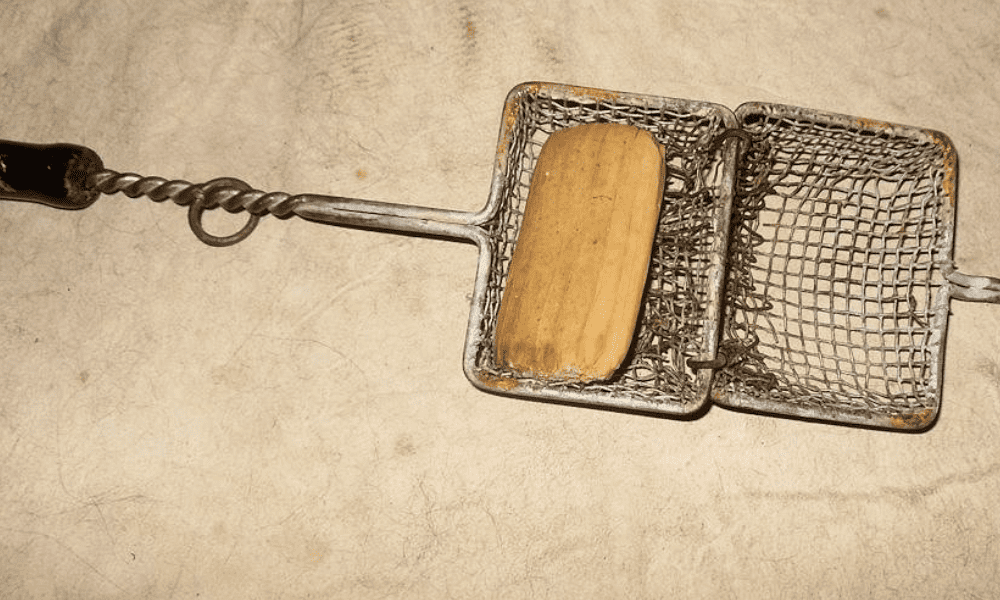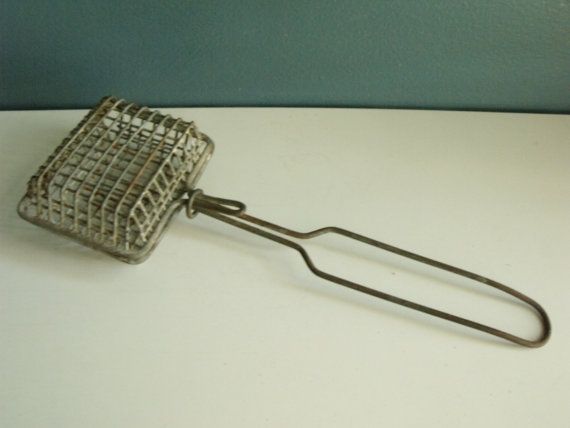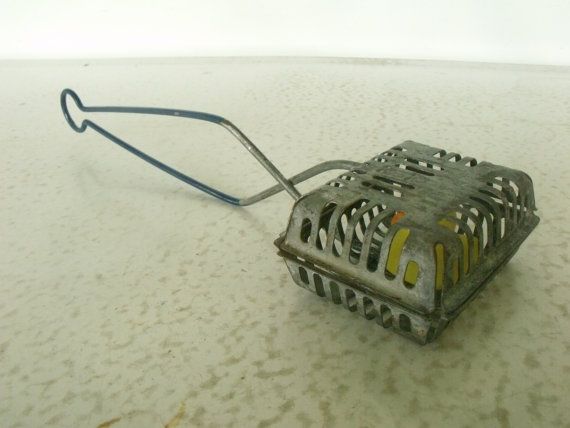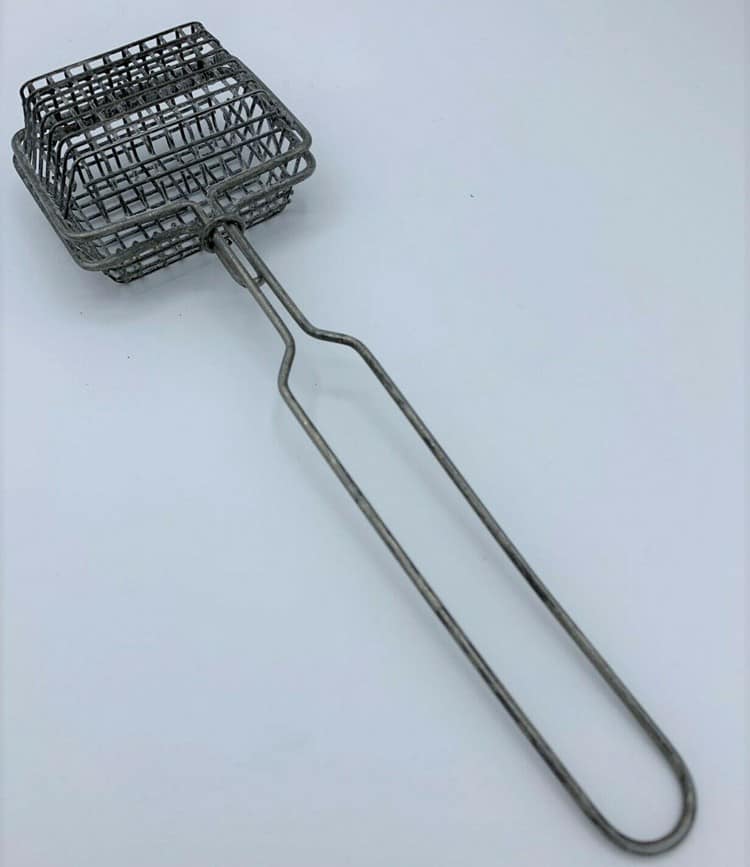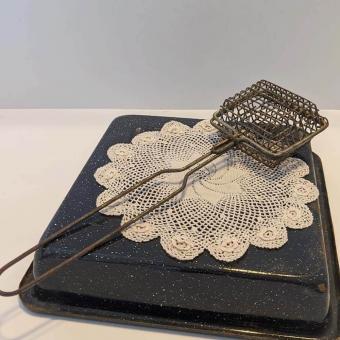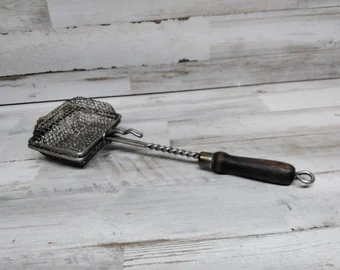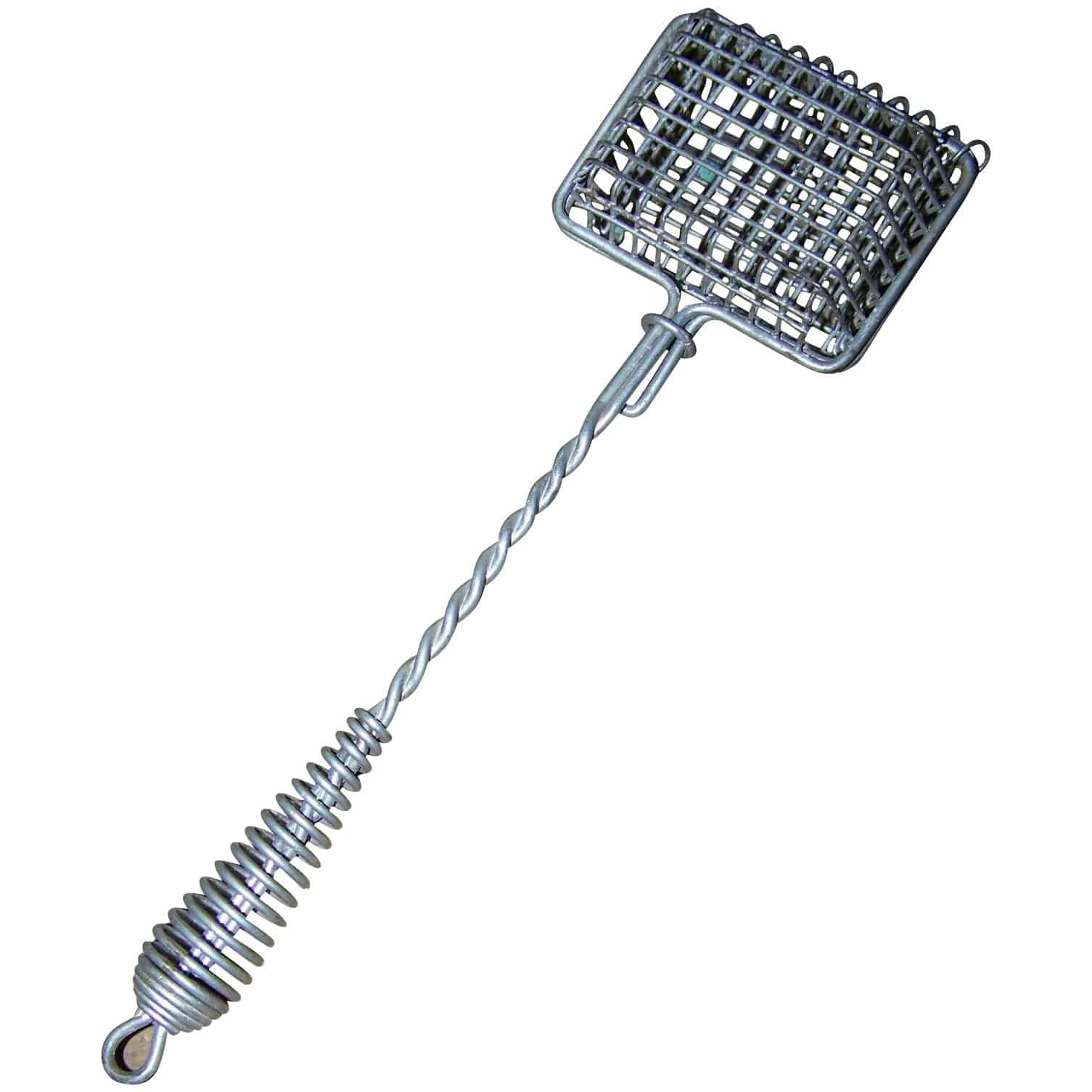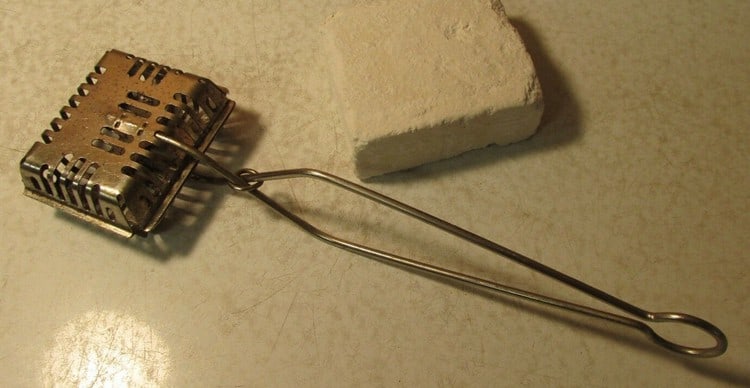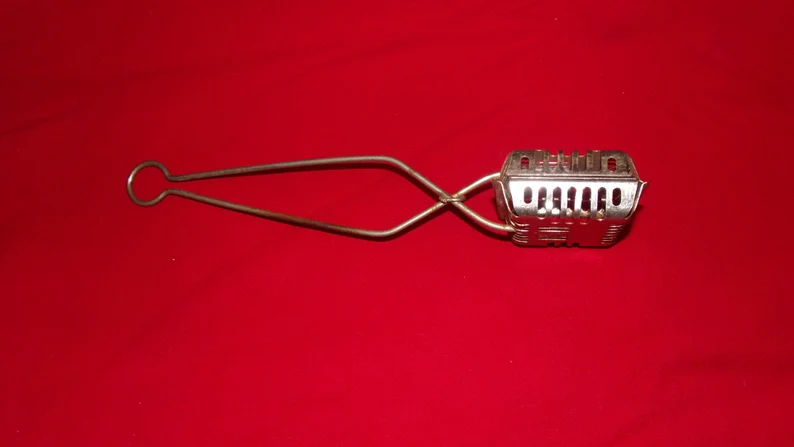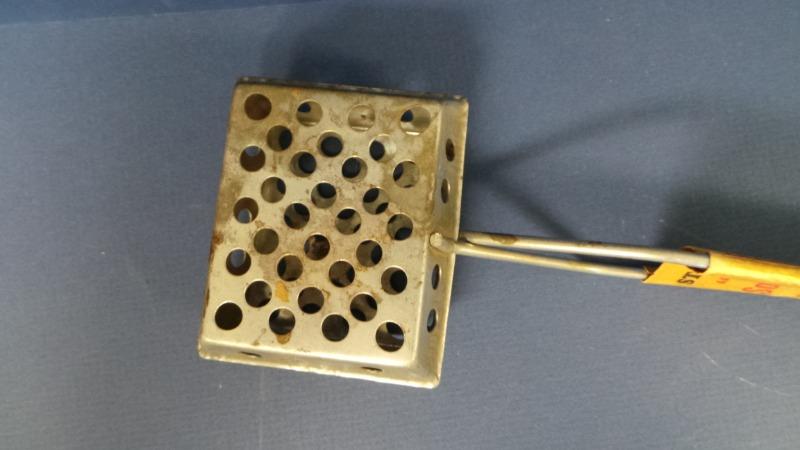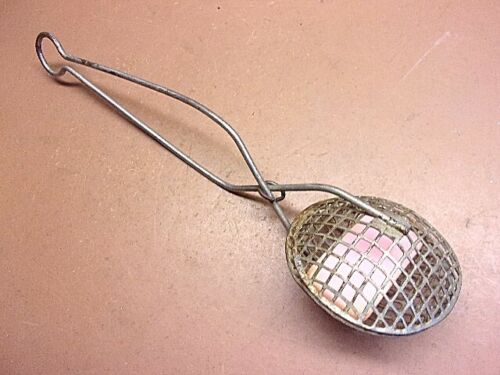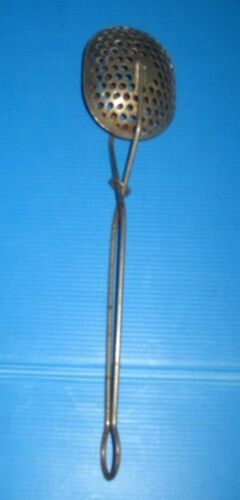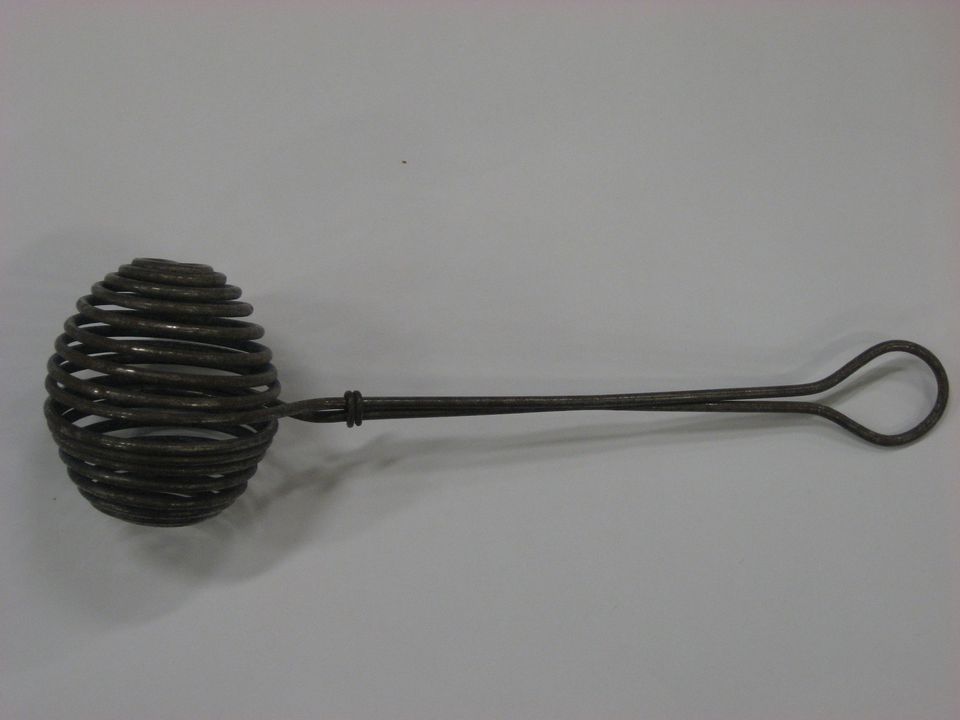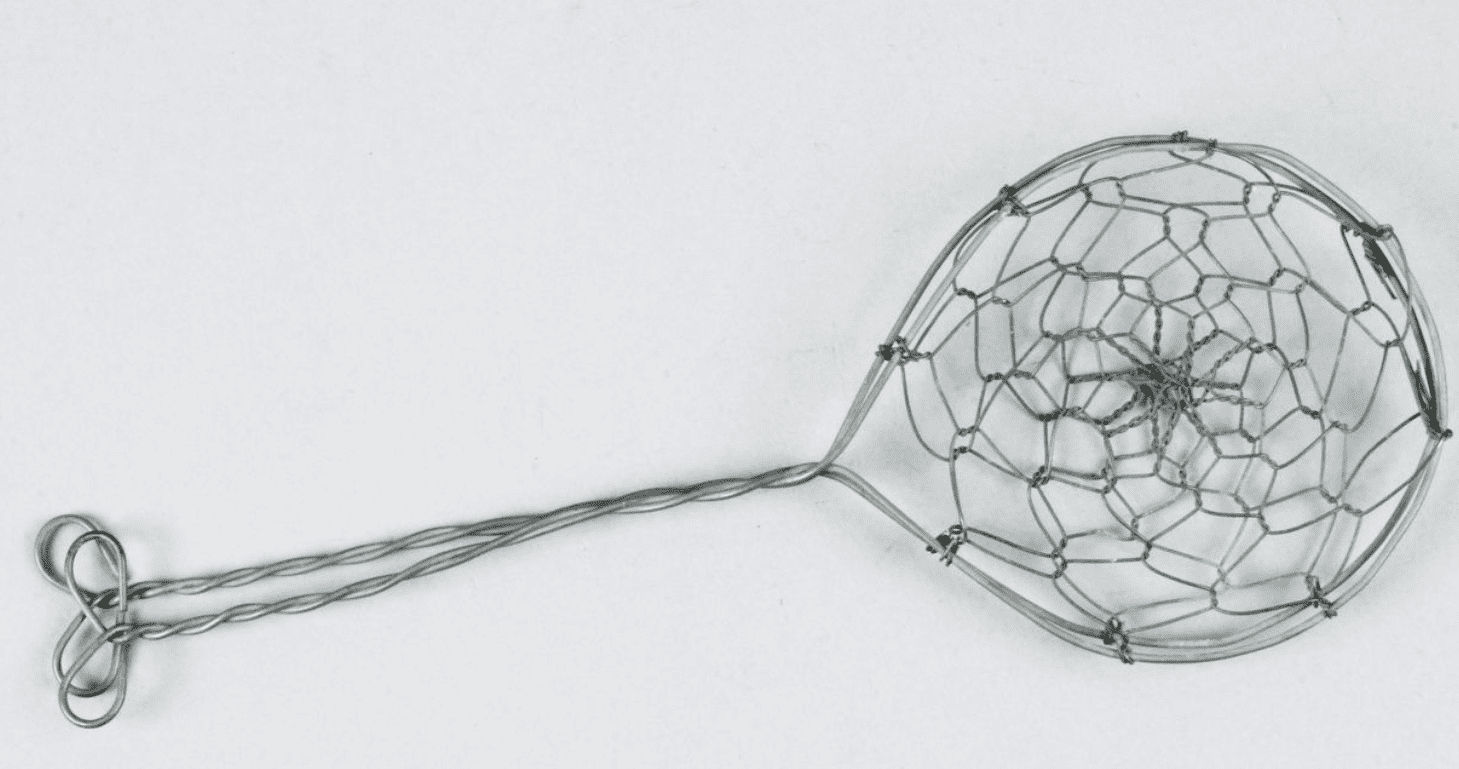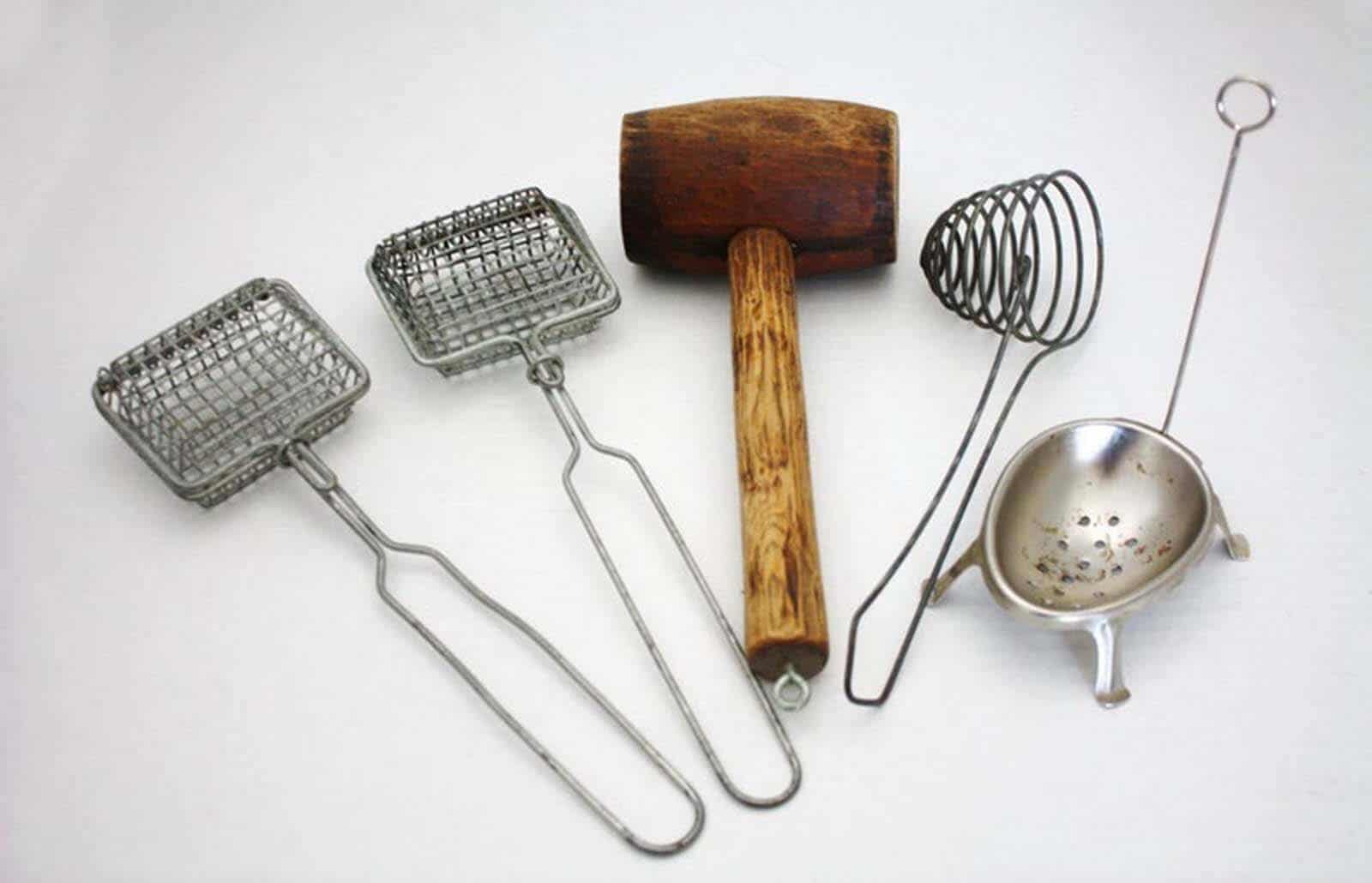Many people have never heard what an antique soap saver is. This mysterious wire mesh with a long metal handle looked like a kitchen utensil, but it was a valuable item used for cleaning. Most housewives kept them in their homes for everyday use.
Surprisingly, numerous collectors look for such weird pieces. Nowadays, you can see three primary models available on the US market in the past, but it is also possible to find a few different models coming from other countries. Let’s see.
Table of Contents
What Is a Soap Saver?
A soap saver (dish switcher, soap cage, soap wand, soap shaker) was a convenient bathroom accessory that housewives used to extend the soap bar lifespan. Since they often had a metal ring for hanging it on a nail, they kept soap dry by keeping them off the surface.
The way soap saver worked
The soap saver’s function was uncomplicated. They were a place for storing small soap leftovers instead of throwing them away. Be aware that soap was pretty expensive in the past, and its preparation was time-consuming, so throwing even the tiniest piece was considered wasteful.
Therefore, women collected pieces of used-up soap into the soap saver box basket and used them for washing laundry. Since this item had a long handle, it was possible to put the box inside the hot water, turn it around, and let the soap dissolve without being hurt.
Soap Saver History
Soap savers were items in everyday use from the early to mid-20th century, with their peak during the Great Depression in the 1920s. After decades of use, this simple but ingenious invention lost its purpose after liquid detergent, powdered soap, and plastic bottle introduction.
Basically, it was a wire-metal mesh box with a long handle. It came with a clasp, safety ring, and squeeze-to-open mechanisms that allowed quick box opening and closing.
The first idea was to create a box large enough for standard bar soap. However, most housewives used these items to hold soap leftovers that were too small to be used as hand soap before using them for washing laundry.
After securely closing the box, the women vigorously shook it in a bucket filled with hot water while holding the handle. That way, the water would become soapy and prepared for cleaning and washing.
Antique Soap Saver Types
Antique soap savers were practical items with the same primary design, but their styles varied depending on the manufacturers.
Even though you can find three main variations of this product nowadays, a few local producers followed their own idea of each model’s appearance in the past. Therefore, you can find basic designs with different shapes, patterns, and dimensions.
Antique soap saver value |
|
| Soap saver type | Price |
| Rectangular basket with wire clasp | $25 to $30 |
| Rectangular basket with a safety ring | About $30 |
| Square basket with a wooden handle | $30 |
| Squeeze-to-open soap savers | $10 to $22 |
| Round basket soap savers | $20 to $30 |
| Wire soap saver, 1930 to 1950 | not available |
| Wire soap saver, 1940 to 1960 | not available |
Rectangular basket soap saver with wire clasp type 1
After detailed research of the Net, you can conclude a soap saver with a rectangular basket shape is the most common on the current market. The probable reason is its practical design since most soaps produced a century ago had such a shape.
The rectangular basket model was made of wire mesh and a tiny sliding wire clasp on one of the longer sides. Such construction allowed unhindered opening and closing of the box to place a soap bar inside. Most housewives kept a couple of leftover soaps inside and used them when needed instead of throwing them away.
The metal wire construction was attached to a less than 1 foot (30.5 cm) in length handle. This particular model came with a handle made of curved, thick wire. An approximate price for such a piece is $19 to $30 nowadays, depending on the sales sites.
Rectangular basket soap saver with wire clasp type 2
This rectangular basket soap saver worked on the same principle, but its wire mesh eyelets were more delicate and of smaller dimensions. This model also featured a sliding clasp on one side to allow an effortless product’s opening and closing.
After placing a bar of soap inside and dissolving it in water without wetting the hands, housewives could use it for washing clothes. The handle was of the same size, typically 1 foot (30.5 cm) long, but its appearance was different.
This particular model comes with a convenient handle made of metal. The engraved inscription SOAP SAVER makes it an elegant and desirable collectible you can get for approximately $25.
Square basket soap saver with a wooden handle
This antique soap saver found in California was produced during the Great Depression when housewives saved money by using soap to the last crumb. That made this piece created of aluminum valuable in every household.
It came with 10 inches (25.4 cm) long wooden handle and a basket measuring 3 by 3 inches (7.6 x 7.6 cm). Interestingly, the model sold on Etsy for $30 still had the inventory store sticker No. 436.
Rectangular wire basket soap saver with a safety ring
This lovely antique rectangular basket wire soap saver had a bit different mechanism. Instead of a sliding clasp, this model featured a safety ring that allowed the opening and closing of the box by sliding into provided space on the handle.
It was possible to hang it on a nail, thanks to a metal ring placed at the end of the 7.5 inches (19 cm) long stylish handle created of artistically bent wire.
The handy basket measures 3 by 2 inches (7.6 x 5 cm), which was enough to fit a standard soap bar. When the basket was closed, the total product length was about 10.5 inches (26.7 cm).
Squeeze-to-open soap saver type 1
This easy-to-use soap saver type allowed manipulation with one hand, making it convenient. Housewives could open and close the box containing soap leftovers with light pressure, thanks to the specifically crossed handle.
Such a construction had an advantage over the model with a clasp since there was no need for direct contact with soap and a damp box. Plus, accidentally opening the box was almost impossible. Nowadays, you can buy this soap saver model for a modest $10.
Squeeze-to-open soap saver type 2
Unlike the previous model, this one came with a more stylish, cylinder-like box. The handling was the same, allowing manipulation with only one hand.
It was also safe for use without possibly dropping a soap bar after accidentally opening the box in the warm water. This lovely piece with a shaped handle end allows easy hanging and can be yours for only $12.
Squeeze-to-open soap saver type 3
This unused antique Sudsy soap saver was a practical item that allowed saving every tiny piece of lye soap during the Great Depression. It featured a stamped steel basket with zinc finish sturdy attached to a 10 inches (25.4 cm) long spring handle. This particular piece with the original label was available for $22.
Round basket soap saver type 1
Round basket soap saver is rarer than those with rectangular wire basket made of lightweight metal but looks better. It appeared in the early 20th and was an unavoidable item for saving by using soap leftovers during the pre-wash program.
In most cases, it came with a squeeze-to-open handle, but you can sometimes come across a rare model with a clasp. The most scarce type can rotate in the water, but it is unlikely to find it on the current market. Nowadays, this ordinary round soap saver costs $15.
Round basket soap saver type 2
This 11 inches (28 cm) long antique primitive soap saver with a rare metal mesh design allowed opening and closing by squeezing the handle in the middle. It was pretty rare, but a piece that occasionally occurred on the market is typically worth $19.
Reckitts wire soap saver, 1930 to 1950
This elegant egg-shaped Reckitts dispenser was made from a bent thick black wire with eight rings on both sides. After squeezing 21 inches (54 cm) long handle, these two parts opened and allowed adding soap leftovers. Original packaging came with an unused Reckitts’ block wrapped in white fabric.
Australian wire soap saver, 1940 to 1960
An unknown maker produced this wire soap saver in Australia from 1940 to 1960. It was probably a handmade item created of two-wire connected at one end that formed two round frames.
A piece is 4 inches (10 cm) long with netted wire filing both frames. They create 0.8 inches (2 cm) deep box for keeping soap leftovers.
Antique Soap Savers Value
Honestly, soap savers are a bit weird collectible items at first glance. However, they are a trace of history and affordable pieces you can hang on the bathroom wall and recall your grandparents’ lifestyle.
Most models are available online, at flea markets, and in antique stores for approximately $10 to $30. Some pieces are rare, while sometimes, only one unique type has ever appeared on online sites.
Interestingly, rarity won’t particularly affect their price, and you will probably need to offer only a few bucks more for one unusual piece. Even though you probably won’t use a soap saver, you can consider antique models beautiful and collectible.
As always, their condition will affect their value. Understandably, using an old item for decorative purposes requires an appealing look. Therefore, broken, distorted, and rusty objects won’t be desirable display pieces.
On the other hand, most collectors appreciate a patina on the old metal items and will probably look for those with soap leftovers stuck in wire mesh eyelets.
Unlike desirable partial tarnishing and chipping, structural problems, interactive appearance, and possible restoration or repairs will reduce the price of soap savers.
Antique Soap Savers Advantages
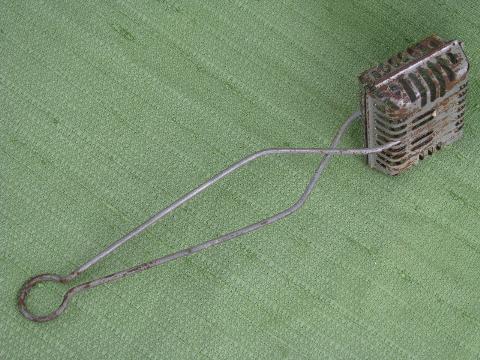
Collecting soap slivers and using them to the very end was a useful habit. They actually had numerous advantages, including:
Soap saver saved soap – Housewives used an antique metal soap saver to collect soap leftovers and gave them a purpose instead of throwing them in the trash.
Once soap became too tiny to handle, these practical women put it in a box and used it to make soap water during pre-washing.
Soap saver kept soap bar dry – Soap left in a saver will dry in the air without unnecessary loss of molten parts. On the other hand, using this valuable item allowed using it to the last crumb and prolonged its life.
Soap saver is a stylish and convenient item – Hanging this piece in the bathroom was decorative and practical. Keeping tiny soap pieces in the box helped housewives keep countertops and sink tops clean from ugly soap scum. That reduced the need for frequent and unnecessary bathroom sink cleaning.
Soap saver was an easy to clean product – Since its maintenance was effortless, having this item saved time and hard work in the bathroom.
Soap saver kept soap leftovers in one place – Thanks to a convenient mechanism, it was possible to open a soap saver and add new pieces whenever they appeared. That way, they were prepared for use at any time.
Soap saver improved lather – After collecting a few pieces, housewives could use these soap leftovers by immersing a soap saver in boiling water until forming rich foam.
Soap savers improved health – These items’ antimicrobial properties help people stay healthy. They reduced soap waste accumulation that stimulated bacteria growth.
Soap saver was an eco-friendly product – Since savers were made of metal, they could last practically forever, making them environmentally friendly. Collectors appreciate finding these antique pieces of bathroom accessories with decades-old soap leftovers.
In the end, such a piece evokes memories of our grandmothers and an entirely different life. In those times, things weren’t thrown without a second thought but carefully taken care of.
Summary
Soap savers lost their purpose in modern society, but many antique lovers enjoy adding such items to their home decor.
You can hang these elegant and affordable pieces on the laundry room or bathroom wall. However, you should check a few things before purchasing to ensure that the soap saver you have found is a genuine antique.
